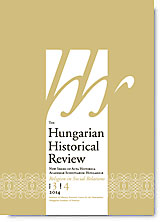Religions and the Nation in Kassa before World War I
Religions and the Nation in Kassa before World War I
Author(s): Frank HenschelSubject(s): History
Published by: Magyar Tudományos Akadémia Bölcsészettudományi Kutatóközpont Történettudományi Intézet
Summary/Abstract: The paper aims to evaluate the role of religion in the everyday life of a multilingual town in the former Hungarian Kingdom in the second half of the long nineteenth century. It focuses in particular on the adaptation to and adoption of nationalist discourse and practice in religious communities. Religion as traditional and nation as modern ideological concept and symbolic order competed against each other for influence in society. However, religious representatives and nationalist activists also worked together in mutual initiatives. The main goal of the Hungarian nationalist program was linguistic homogenization, i.e. the Magyarization of society, and churches were assigned a special role in this project. They provided the possibility of gaining mass attention and could serve for mass inducement. At the same time, church institutions and services were spaces of everyday multilingual practice in mixed lingual areas. In the end, different confessional communities in Kassa (German: Kaschau; today Košice, Slovakia)1 showed different strategies. The Roman Catholic Church and the Lutheran Church, due to the resistance from the majority of believers or church clerks (who protested against Hungarian-only services), remained multilingual up to World War I. Other communities transformed themselves quite smoothly from multilingual to Hungarian-only and therefore “patriotic” or “loyal” communities, e.g. the Jewish Reform (Neolog) Community or the Local Greek Catholics, whereas the Calvinists had always regarded themselves as the true “Magyar Denomination.” In general, the churches always played a vital role in the social and cultural life of the town, in school and educational systems, in associations, or in the culture of memory. But many questions and discussions of the era were linked to nationalist requirements and objectives which concerned the church representatives.
Journal: The Hungarian historical review : new series of Acta Historica Academiae Scientiarum Hungaricae
- Issue Year: 3/2014
- Issue No: 4
- Page Range: 850-874
- Page Count: 25

